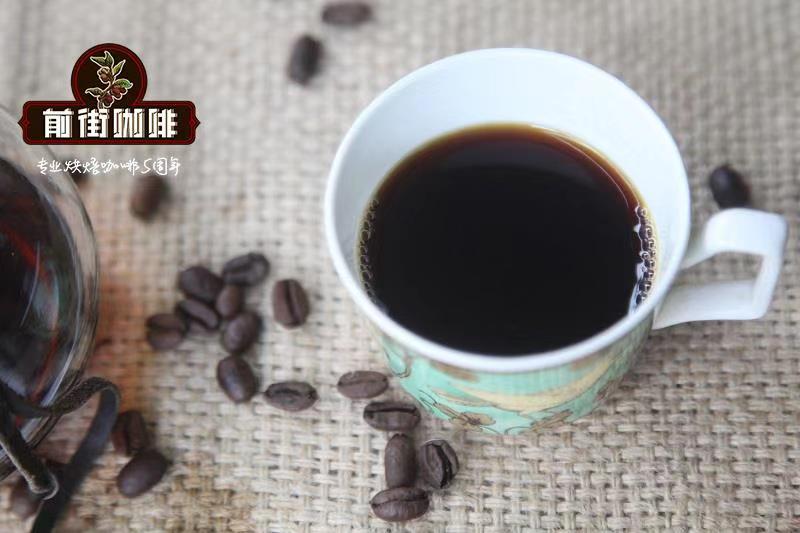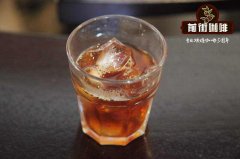What kind of beans is Huakui Coffee Bean? a brief introduction to the characteristics of sunny Huakui coffee beans

Professional coffee knowledge exchange More coffee bean information Please pay attention to coffee workshop (Weixin Official Accounts cafe_style)
Front Street Coffee-West Damo Hambera Coffee Sharing
The word "native species" refers to the ancient variety of plants originally planted for food, some define it as more than 100 years old, others say 50 years old. Some then define as original species varieties that existed before 1945, about the time hybrids began to appear, or 1951, when hybrids became more widespread.
Broadly, Ethiopian coffee varieties can be divided into two groups: JARC varieties and regional endemic varieties.
JARC varieties were developed by the Jima Agricultural Research Centre, an agency of the Ethiopian Agricultural Federation Research Centre, to study pest resistance and yield improvement. There are about 40 species in it. Regional endemics are wild varieties grown in the wild in Ethiopia. Getu indicates that these wild species may exceed 10,000.
This means that when a consumer buys a packet of Ethiopian coffee and sees that the bean bag is marked with the original species, the coffee may be a combination of these more than 10,000 varieties. The flower queen is one of them.
The plots for harvesting red fruits are more concentrated, and the new processing sites are closer to each other, ensuring that red fruits are collected and processed at the fastest speed. The whole treatment process is only under the guidance of scientific measuring instruments for more refined management, and there is no "breaking the traditional" improvement process, red fructose degree reached more than 21 before the sun treatment, so the sweetness is quite high. The flower buds treated by sunlight had low acid and high sweetness.
Huakui production area: Guji Guji, Shakisso, Hambella Hambella, there are about 20 treatment plants of various sizes in Hambella production area. As a coffee green bean company rooted in Ethiopian coffee producing areas, Hongshun has established four solarization plants in Ethiopia since 2016 in the GUJI zone Hambella producing area, and conducted a series of research on solarization methods using high quality coffee varieties in the region in the 17/18 season.
During the harvest season (December-January), its unique growing environment and natural climate created its unique flavor. The red fructose we picked should reach 30 or more before we start sun treatment. The first two days of sun exposure, to ensure that the humidity of red fruit, so that its fructose full start fermentation reaction. At the same time, the geographical location of high altitude makes the temperature of the treatment plant at night drop to about 12 degrees Celsius, and it will not produce excessive fermentation smell because of the high temperature. At noon, when the temperature is relatively high, it will be blocked to prevent red fruit sunburn.
GUJI, HAMBELLA
Coffee producing countries: Africa, Ethiopia,
Coffee varieties: Heirloom, native to Ethiopia (heirloom)
Production altitude: 2250-2350M
Quality grade: G1
Treatment: Natural Sun (African Sun Bed)
Flavor Taste: High sweetness, solid taste, jackfruit, passion fruit, strawberry flavor
END
Important Notice :
前街咖啡 FrontStreet Coffee has moved to new addredd:
FrontStreet Coffee Address: 315,Donghua East Road,GuangZhou
Tel:020 38364473
- Prev

What are the characteristics of Sunshine Flower Kui flavor and taste? Yega Shifei Xida Hua Kui hand to share.
Professional coffee knowledge exchange more coffee bean information please follow the coffee workshop (Wechat official account cafe_style) Qianjie Coffee-Sidamohan Bella Sun Sakui Coffee sharing Ethiopia's coffee estates are mostly in the native state, the local farmers just go to the mountain to pick, only choose all red fruits, fully ripe coffee cherries, all manual picking, African scaffolding to air, limit
- Next

What are the characteristics of Hechong Huakui 6.0 Coffee? description of the flavor and flavor of small grains of Huakui coffee beans
Professional coffee knowledge exchange more coffee bean information please follow the coffee workshop (Wechat official account cafe_style) Qianjie Coffee-Sidamo Flower Kui Chong sharing Sakui 3.1 was found in our familiar GUJIHAMBELLA producing area, in the cove of the MANSA area has a new and whole
Related
- Beginners will see the "Coffee pull flower" guide!
- What is the difference between ice blog purified milk and ordinary milk coffee?
- Why is the Philippines the largest producer of crops in Liberia?
- For coffee extraction, should the fine powder be retained?
- How does extracted espresso fill pressed powder? How much strength does it take to press the powder?
- How to make jasmine cold extract coffee? Is the jasmine + latte good?
- Will this little toy really make the coffee taste better? How does Lily Drip affect coffee extraction?
- Will the action of slapping the filter cup also affect coffee extraction?
- What's the difference between powder-to-water ratio and powder-to-liquid ratio?
- What is the Ethiopian local species? What does it have to do with Heirloom native species?

